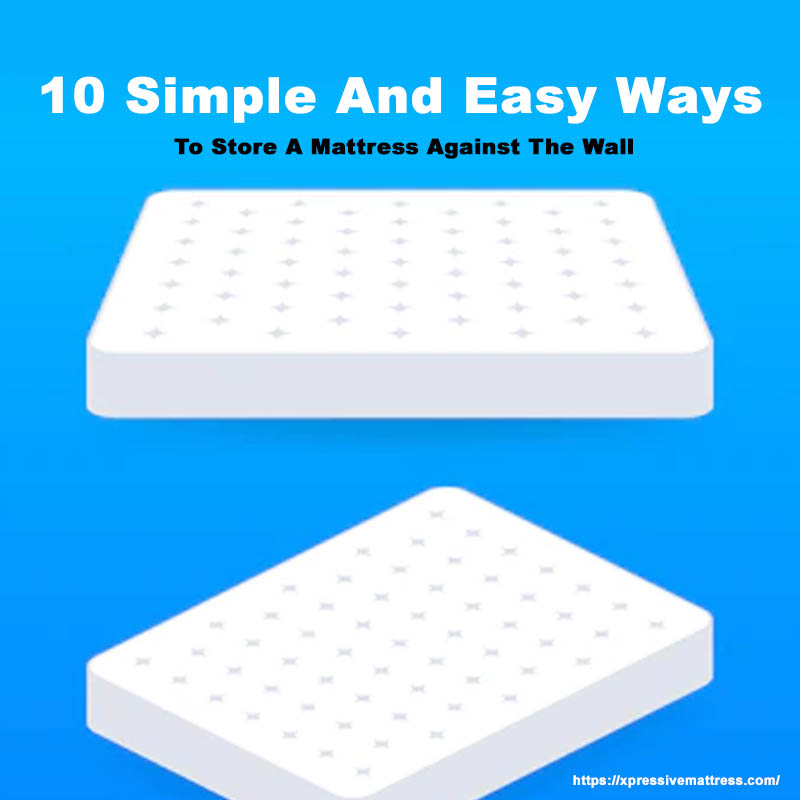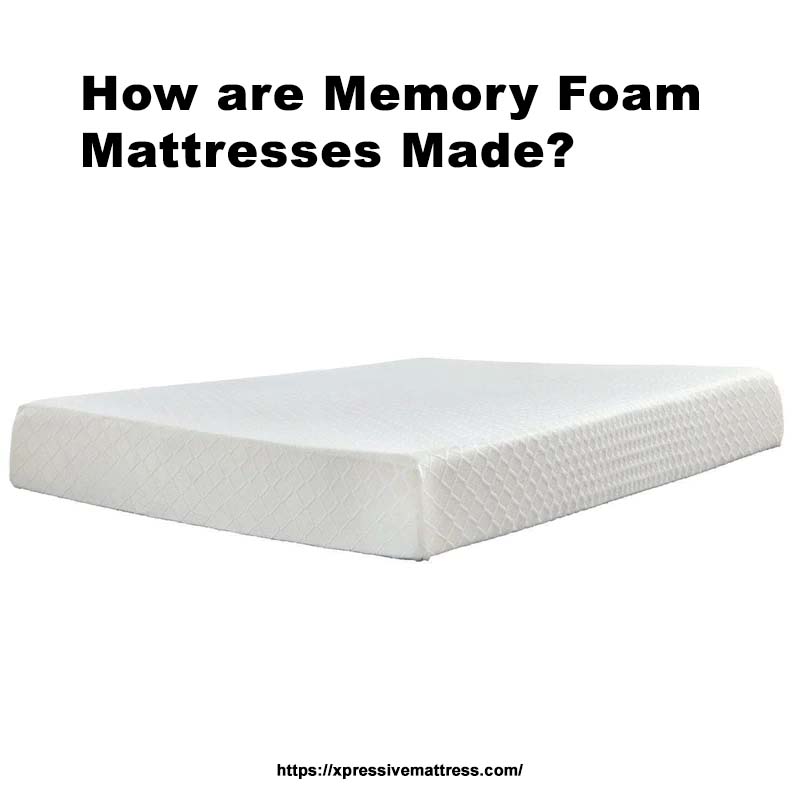Installing a mattress encasement is an easy and effective way to protect your bed from dust mites, allergens, bacteria, and other unwanted visitors.
It’s also great for extending the life of your mattress! Here are some tips on installing one:
- Ensure you have all the necessary materials – such as scissors or a knife (for cutting), tape measure (to get accurate measurements), and any additional items that may be required by manufacturer instructions.
- Remove everything from the top of your mattress, including sheets/blankets. Then unzip it completely so you can access both sides easily.
- Lay out the encasement flat with its zipper facing up. This will help ensure proper alignment when installing later on.
- Start at one corner of either side and slowly work around until fully zipped up!
With these simple steps in mind, anyone can successfully install their Mattress Encasement quickly and efficiently without too much hassle!
What Is A Mattress Encasement?
A mattress encasement is a protective cover that fits over your entire mattress.
It helps to protect the mattress from dust mites, bed bugs, and other allergens.
The encasement also provides an extra layer of comfort for you while sleeping!
Here are some important facts about them:
- They come in twin, full, queen, or king size.
- Most have zippers so they can be easily removed when needed.
- Some brands offer waterproof protection against spills and accidents.
- Others provide anti-allergen properties which help reduce allergies caused by dust mites and pet dander.
- These features, combined with their durability. That makes them ideal for people who suffer from asthma or allergies and those looking to extend the life of their mattresses.
- So if you’re looking for added protection on your bed, then investing in a quality mattress encasement could be just what you need!
Why Should I Use A Mattress Encasement?
A mattress encasement is an important tool for protecting your bed.
It provides a barrier between you and any allergens, dust mites, or other pests in the mattress.
Here are some reasons why you should use one:
- Protects against dirt, dust, and spills. A good quality encasement will keep all kinds of debris from entering the mattress, which can cause damage over time.
- Prevents allergies – Dust mite droppings trigger allergic reactions such as sneezing, coughing, and itchy eyes.
- Keeps bugs away – Bedbugs have become increasingly common in recent years. Using an encasement helps prevent them from getting inside your bedding where they could lay eggs.
- Extends life of mattresses – Encasing a new or old mattress prevents wear and tear on its surface, making it last longer than if left unprotected.
- Plus, many come with warranties of up to 10 years!
In conclusion, investing in high-quality waterproof/bedbug-proof Mattress Encasements is essential for keeping beds clean and healthy while extending their lifespan significantly!
What Are The Different Types Of Mattress Encasements?
Mattress encasements are protective covers that fit over a mattress to protect it from dust, dirt, and other allergens.
There are several different types of mattress encasement available:
- Waterproof Encasements – These provide protection against liquids such as sweat or spills. They also help keep the bedding clean by preventing moisture buildup inside the cover itself.
- Bed Bug Proof Encasements – Designed specifically for keeping out bed bugs. These have special zippers with tiny teeth which prevent any bug from entering.
- Allergen-Proof Encasments – Made with hypoallergenic materials like polyester microfiber fabric, this type helps reduce exposure to common household allergens, including pet dander and pollen particles. While still allowing air circulation within its breathable design structure, you can sleep comfortably without worrying about allergies flaring up during restful nights!
- Cooling Mattress Covers – This is perfect if you tend to get hot at night due to body heat retention caused by traditional foam beds.
Cooling covers feature advanced technology fabrics designed specifically for temperature regulation throughout all seasons, ensuring optimal comfort no matter what time year it may be outside!
No matter which one you choose, each type offers superior protection against wear and tear and provides an extra layer of defense between yourself (and/or family members).
Plus, whatever might lurk beneath those sheets.
So make sure when shopping around that quality matters most before making any final decisions regarding purchasing new bedroom accessories today!
How To Choose The Right Mattress Encasement?
When it comes to choosing the right mattress encasement, there are a few things you should consider.
- Size: make sure your new encasement fits snugly around your mattress so that no bed bugs or allergens can get in! Second, look for materials like cotton terry cloth or polyester knit fabric.
- These fabrics will provide maximum protection against dust mites and other pests while still being breathable enough to keep you comfortable at night.
- Check out any special features, such as waterproofing technology, which helps protect from spills and stains.
- Think about how often you plan on washing the cover. Depending on their material composition, some covers may require more frequent laundering than others.
With all this information in mind, selecting the perfect mattress encasement shouldn’t be difficult!
What Tools Do I Need To Install A Mattress Encasement?
To install a mattress encasement, you will need the following tools:
- Scissors or a sharp knife.
- Measuring tape.
- And an iron.
Step-by-step instructions:
- Measure your mattress to determine what size of encasement is needed. Then cut open the encasement packaging using scissors or a sharp knife.
- Lay the fabric on top of your bed frame – so that it covers all sides evenly with no wrinkles between them (you may want to use an iron if necessary).
- Secure each corner tightly by tucking it underneath itself before zipping up completely around three sides. Leaving one side unzipped until after the installation is complete!
Make sure there are no gaps where bugs could enter through.
And ensure that any seams have been sealed properly with heat-sealing adhesive strips provided in most kits.
Once everything has been secured correctly, zip up the final side and enjoy your new bug-free sleeping environment!
Step-By-Step Guide To Installing A Mattress Encasement
Installing a mattress encasement is an easy process that can help protect your bed from dust mites, allergens, and other irritants.
Here’s a step-by-step guide to getting you started:
- Measure the size of your mattress – Make sure to measure both length and width for accuracy!
- Purchase the right sized encasement – Choose one made with breathable fabric like cotton or polyester so it won’t trap heat while still providing protection against pests and moisture damage.
- Remove any existing sheets/covers on the mattress. This will make installation easier as there are no obstacles in place when putting on the new coverings overtop later down below steps 4 and 5.
- Place Encasement Over Mattress – Start by laying out flat, then carefully pull up each side until fully covering all four corners evenly. Secure zipper closure at the bottom edge (if applicable).
- Secure Covering With Elastic Straps Or Ties – If included, use these straps or ties around perimeter edges to ensure a tight fit without bunching material too much. This could cause discomfort during sleep hours afterward once finished installing everything correctly here today already completed successfully!
Tips For Installing A Mattress Encasement Successfully
Installing a mattress encasement is important in protecting your bed from dust mites, allergens, and other irritants.
Here are some tips to help you install it successfully:
- Measure the size of your mattress before purchasing the encasement – make sure that it fits snugly around all sides of the mattress for maximum protection.
- Unzip or unbutton any existing covers on your bed so they can be removed easily.
- Place one side of the encasement halfway onto one end of the mattress. Then pull down gently until fully covering both ends and sides.
- The zip button closed securely at each corner, ensuring no gaps left where bugs could enter.
- Tuck excess material under the bottom edge, ensuring the entire surface area is covered with tight fit against edges.
- Check regularly for signs of wear and tear, such as rips, tears, or loose seams. Which may need repair work done quickly if found early enough! Use care not to tear fabric when starting out wrinkles.
Conclusion: How To Install A Mattress Encasement?
Installing a mattress encasement is an easy and effective way to protect your bed from dust mites, allergens, bacteria, and other pests.
It’s also important for keeping the mattress clean and free of dirt or stains.
The process involves measuring the size of your mattress accurately. Selecting a suitable material such as cotton or polyester.
Unzipping it carefully so that you don’t damage any parts.
Placing it on top of the box spring before zipping it up again securely at all four corners.
In conclusion, installing a quality-made encasement can help keep your sleeping environment healthy while extending its life span!



